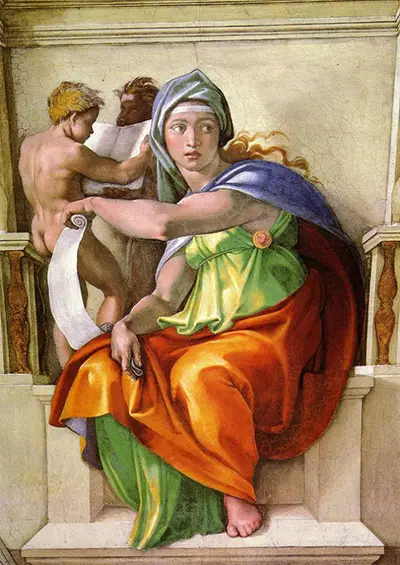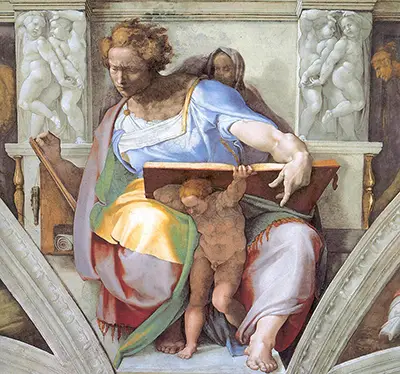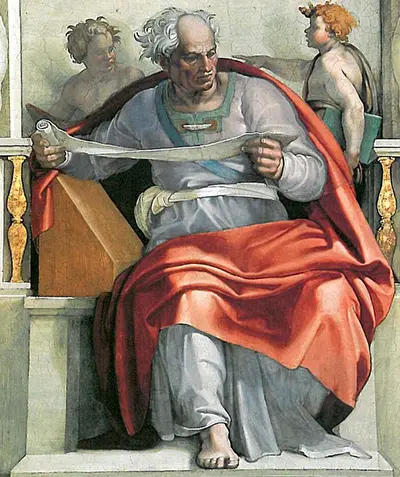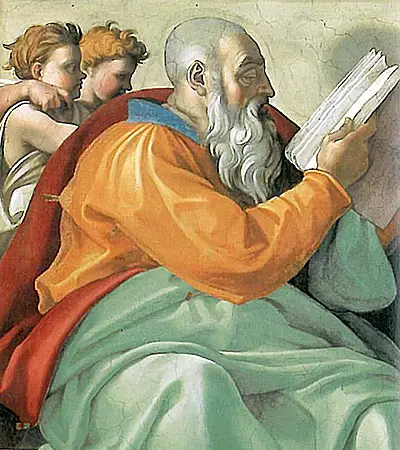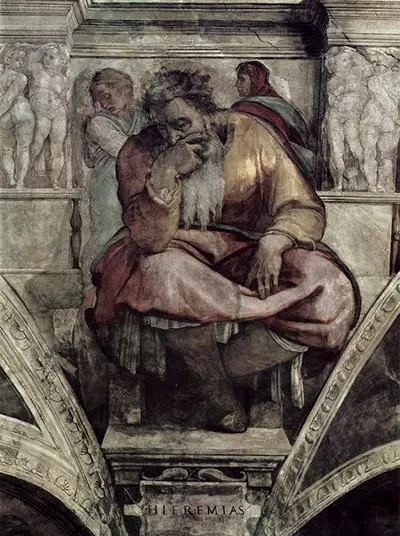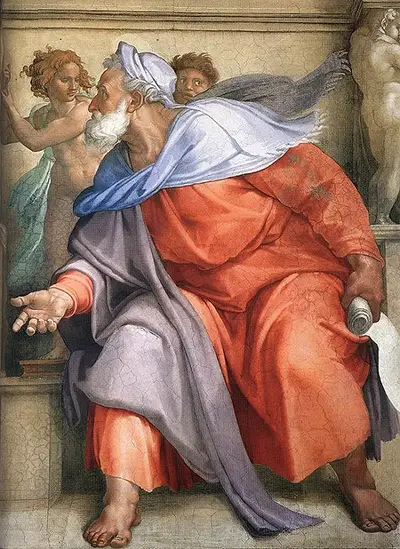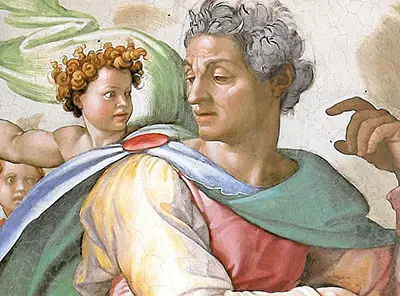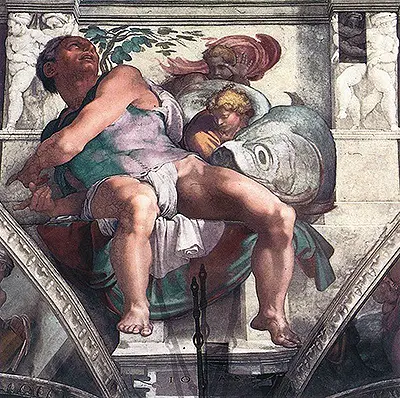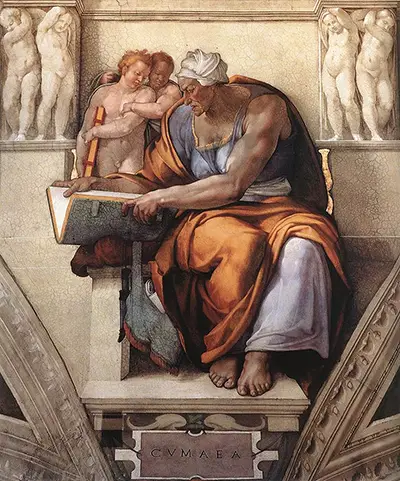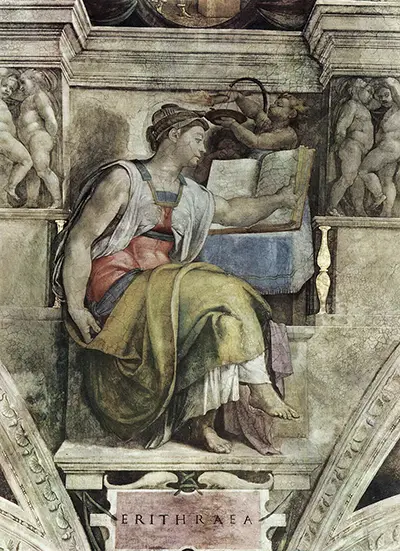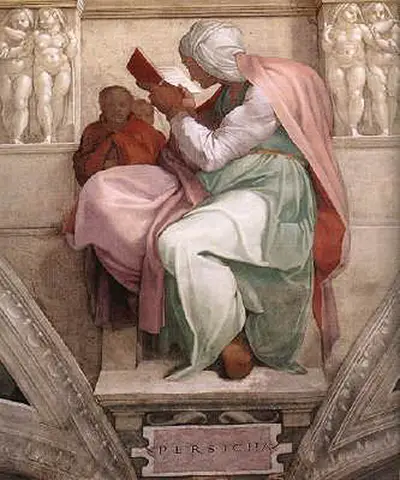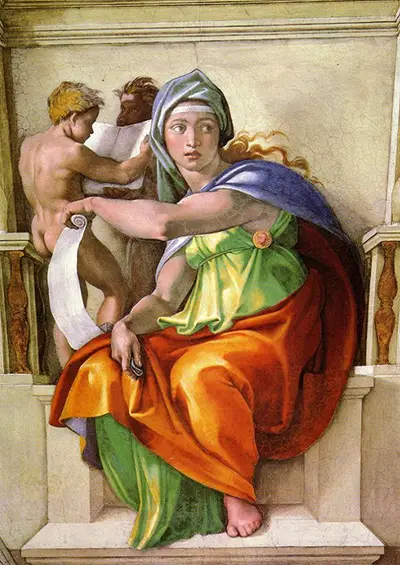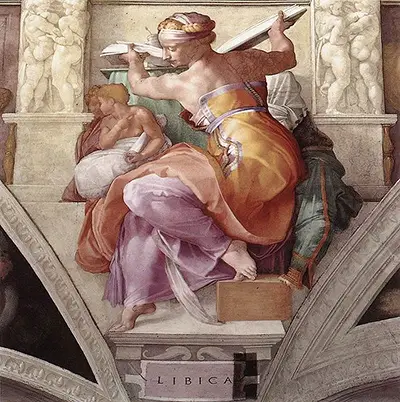The paintings were placed on the outside of the main strip of work related to the Book of Genesis. They alternate between other series of work in two rows either side of the Book of Genesis series and those unfamiliar with classical history would be unaware of the themes and figures used here. With twelve Prophets and Sibyls in total, two are positioned at either ends of the room, with five in each row across the ceiling. They are also figurative paintings which attempt to draw attention to the role for which he person is most famous and the artist also painted on plaques besides each one to help us identify them by name. All twelve components are listed below and discussed individually, whilst there is also information on the other parts of his work within the Chapel, such as his Ancestors of Christ, Pendentives and Spandrels which were all located fairly close to these frescos as well.
Isaiah, Jeremiah, Ezekiel and Daniel were known as the major prophets, with Michelangelo then selecting to use three of the remaining twelve minor prophets. The difference between major and minor is normally decided by how much they are mentioned within the religious scripture, even though the impact of their prophesies may have been substantial. The artist would consider the meaning of his content and arrange it accordingly, such as with the example of Zechariah who mentioned the arrival of the King, and so was placed just above one of the doors through which the Pope would himself arrive. The overall series of artwork within this building has received as much study and discussion as pretty much any other in the history of art, and so even fine details like this have been picked up over the centuries that have passed since the work was first completed.
Whilst the twelve items have clear similarities in both style and content, it was specifically The Prophet Isaiah who was singled out for praise by Giorgio Vasari, one of the most significant art historians of all time. He proclaimed that all you needed to learn about painting was covered in this piece, and as someone who was a skilled painter himself, it was high praise indeed. Whilst the overall project has so much to see and enjoy, it is some of Michelangelo's Prophets and Sibyls which have received the most attention over the years, way beyond just Vasari alone. It is perhaps a little unfortunate that the very nature of installed paintings on this ceiling means they are hard to examine and appreciate close up, but thankfully there are some good quality images of them available which go some way to explaining the detail of each one for those unable to visit the Sistine Chapel themselves.
